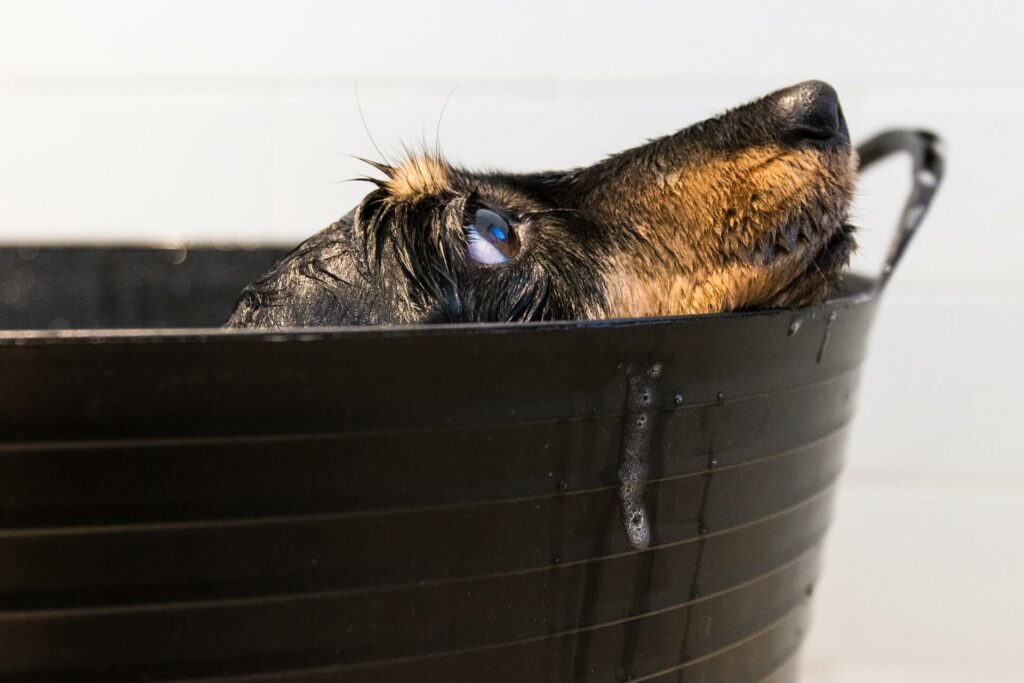The Best Flea Control For Your Dog
Soothing relief is on the way, buddy.

Soothing relief is on the way, buddy.

Ever had a scratch that you can’t reach? It’s the worst… Luckily us humans can ask for help or use a ladle to scratch that itch on our back (yay for thumbs!).
Dogs aren’t so lucky. When fleas infest their coat, they can’t ask us to help alleviate the itching on the parts of their body they can’t reach with their legs. It’s up to us, as pet parents, to keep a close eye for any tell-tale behaviors, like excessive scratching.

Once you suspect that your dog might have fleas, you’ll want to give them the best treatment. But what does that mean? Well, you’ll have to consider how effective or fast-acting the medication is, as well as your pet’s age, weight, and other factors.
But how do you know if your dog has a flea problem in the first place? Take a deep breath—we’ll explain the basics.
When you see your dog scratching themselves more than usual, this might indicate that there are unwelcome visitors lurking in their fur.
Your vet, of course, can offer a close inspection. But you can also check on your own to see if there are actually fleas, or if something else is bothering your furry friend.
Once you know that your dog has fleas, it’s time to take action.

You have four options: topical flea treatments, oral treatments, flea collars, and flea shampoos.
Not sure which treatment is best for you and your dog? No worries, that’s what vets are for. They can help you assess the situation and come up with a good solution for you. (FYI, did you know that with Lemonade’s Preventative+ package, you’re covered for flea and tick medication?)
Topical treatments are liquids or gels that are applied directly on the skin, whereas oral treatments are in the form of a pill. Flea collars slowly release active ingredients on your dog’s body that kill the fleas and flea shampoos wash away fleas, their eggs, and ticks.
Topical treatments
Topical flea medication (a.k.a., ‘spot on’ medication) is often applied between the dog’s shoulder blades so that they can’t reach and lick it off. Brands like Frontline Plus and k9 Advantix are effective topical treatments; they not only help get rid of the fleas, but also repel them. This treatment can be used monthly to make sure fleas go away—and stay away.
Oral treatments
Options include flea pills and chewable tablets that help control, treat, and prevent flea infestations in dogs. They might come in the form of flavored chewies that dogs will easily take to, like a treat.
There are many pills that do different things. Some can kill fleas, whereas some only kill larvae. And some can even prevent fleas from laying more eggs. That’s why it’s important to discuss with your vet which part of the flea life cycle the specific pill treats.
Well-known and effective brands include Bravecto, Credelio, Nexgard, Capstar, Simparica, and Comfortis.
Flea collars
These collars kill fleas by releasing chemicals. Some collars target only adult fleas, while others may kill some of the younger life stages.
One downside of flea collars is that they’re primarily effective in the neck area. Vets usually wouldn’t recommend these collars when your goal is to get rid of or prevent fleas. (More often, collar-based options are used as a tick treatment, because ticks tend to gravitate to the neck area.)
Flea shampoo
Bathing your dog with flea shampoo will get rid of the current fleas, but won’t prevent a re-infestation.

Don’t give your puppy a treatment without consulting your vet. There are treatments that aren’t safe to use on puppies that are younger than 8 weeks of age. The packaging should specify if the product is safe to use or not.
Lemonade’s expert vet Dr. Liff explains that all of the brands mentioned above are FDA- or EPA-approved—but if you have little kids in your home it might be a bit safer to use oral products. That way, children can’t get the treatment on their hands or accidentally ingest it if they’re petting or playing with the pup.
Between vet visits and medications and flea treatments, pet parenthood can get expensive, so we’re here to help take the bite out of some of those expenses. Click below to get your cat or dog enrolled ASAP.
Please note: Lemonade articles and other editorial content are meant for educational purposes only, and should not be relied upon instead of professional legal, insurance or financial advice. The content of these educational articles does not alter the terms, conditions, exclusions, or limitations of policies issued by Lemonade, which differ according to your state of residence. While we regularly review previously published content to ensure it is accurate and up-to-date, there may be instances in which legal conditions or policy details have changed since publication. Any hypothetical examples used in Lemonade editorial content are purely expositional. Hypothetical examples do not alter or bind Lemonade to any application of your insurance policy to the particular facts and circumstances of any actual claim.